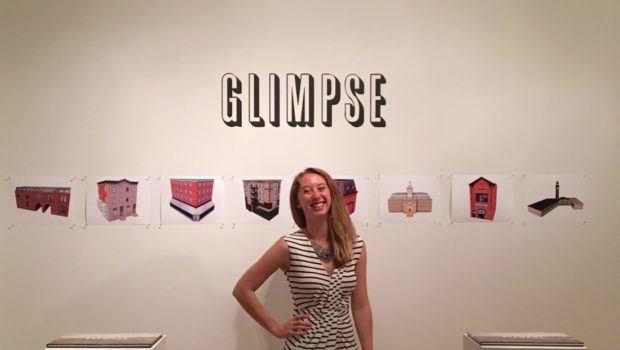
A GLIMPSE OF HOBOKEN IN 3D: Julia Guignard’s Augmented Reality Media Stems From the Stevens Institute’s Visual Arts & Technology Program
by Jack Silbert
photos/images courtesy of Julia Guignard, Chris Manzione, and Stevens Institute of Technology
Although not “born and raised” here, recent Stevens graduate Julia Guignard likely knows the streets of Hoboken much better than you do. And she wanted to share what she knows! “I love all these different buildings and I photograph them a lot,” Julia says. “I realized how cool it would be if I could create a tour, where I walk you through Hoboken.” She parlayed this passion for the city into her senior “capstone” design project, entitled Glimpse. The book and smartphone application combine Julia’s photography prowess with the 3D modeling and augmented reality skills she honed in the Stevens Institute’s Visual Arts & Technology Program.
Wait — augmented what?
Chris Manzione, an assistant professor in Visual Arts & Technology, explains that augmented reality, or AR, “mixes real-world information with digital information. When you watch football on TV, you see those lines that suddenly come up on the field — that’s technically augmented reality. It’s adding digital content to something live.”
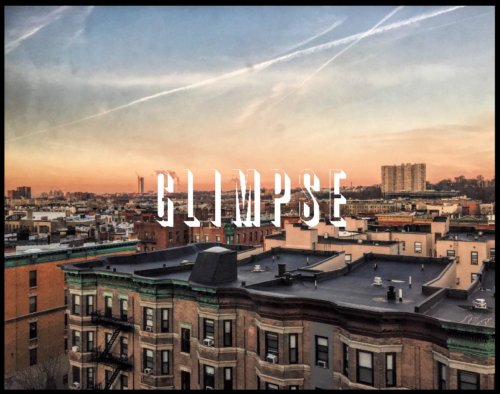
Manzione points out that this contrasts with virtual reality (VR), which we laypeople might associate with video games and The Matrix. He says, “When you put a VR headset on, you’re totally encapsulated by the digital space. There is no mixing of the two.”
Julia’s Glimpse project is firmly in the AR camp. One component is a book of photographs of eight different buildings in Hoboken, with a street shot and an up-close photo for each. It’s with the up-close photos that things start to get high-tech: A reader looks at the photo through what seems like a normal camera app on a phone. The app then “recognizes” the photo and…
“When it registers the image, the 3D model of the building that I made will ‘pop up’ and ‘sit’ on the page,” says Julia. “You can move completely around it 360 degrees.”
Adding another multimedia layer to the proceedings is audio commentary for each building. For this feature, Julia recruited Bob Foster, director of the Hoboken Historical Museum. “I approached the museum, explained what I was doing, and asked if they’d be interested in contributing something to the book,” Julia recalls. “Bob hopped on board right away, and recorded all of that himself for me. It was beyond amazing.”
Foster says, “I was extremely impressed with Julia’s enthusiasm for Hoboken’s history and architecture. And I love how this project helps bring technology into the museum. A copy of Julia’s book will forever be in our archives.”
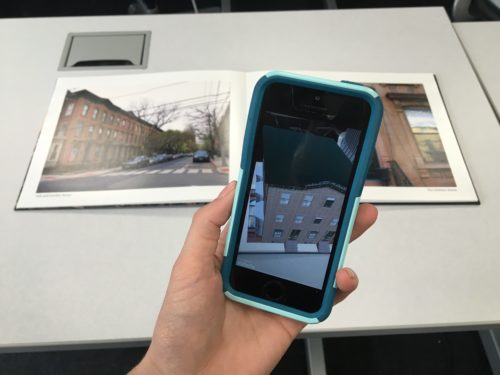
Perfecting the varied aspects of the project was challenging, time-consuming work for Julia. “I pretty much lived in this building for several months,” Julia says, referring to the Morton Building on the Stevens campus, home of the Visual Arts & Technology Program. For her photo shoots, she went out repeatedly in different weather and at different times of day, until she captured the exact image she wanted. Julia also had to consider who would be looking at her project and how they would interact with it: “How someone’s actually going to hold the book and turn the page — that was probably one of the toughest parts.”
Witnessing unsuspecting people check out Glimpse, however, has made all that work worthwhile. She says, “The payoff is seeing everyone’s faces light up when they realize there’s this surprise 3D model that pops up on the page.”
A GROWING PROGRAM
The Visual Arts & Technology Program falls under Stevens’ College of Arts and Letters, which was established in 2007. (A humanities department has existed at Stevens since 1928.)
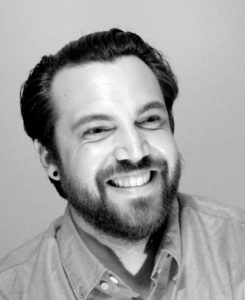
Chris Manzione, assistant professor at Stevens in Visual Arts & Technology
Manzione has been with the program for two years. He teaches courses in video and motion graphics, 2D and 3D design, and augmented and virtual reality. (His classes and guidance were clearly very helpful for Julia’s project.) Manzione is one of three assistant professors in the program, along with Jeff Thompson, the director of Visual Arts & Technology, who is a specialist in design, creative computing, and data visualization, and Nicholas O’Brien, concentrating on game design.
Thompson has been with the program for three years, and O’Brien for one year. So through the 2015–16 year, there were students that pre-dated the current crop of Visual Arts & Technology professors… including Julia! “It’s grown so, so, so much in the last three years I was here. My freshman year, it was a completely different program than it is now,” she says. “After bringing in Jeff and Chris and Nick, it’s expanded, and there are so many things that I never would’ve imagined learning.”
Manzione explains the current faculty’s philosophy: “We’re building up the program. While each student has a focus — design, animation, game design, or video — we’re covering a larger base of knowledge, using it in an art-centered way, not a technology-centered way. Technology provides the tools that facilitate the ideas.”
The program’s varied content and student interests were well on display at the “Cross/Over” exhibit, held in town in April at the hob’art gallery. In addition to Julia’s Glimpse, the program’s two other graduating seniors displayed their projects. Frankie Guarini created Ghost Cities, a tabletop game with the goal of increasing players’ understanding of China’s recent urbanization. And in The Wedding, Virginia Keating complemented her double-major project for Literature by adapting the 15th-century tale “The Wedding of Sir Gawain and Dame Ragnelle” into a comic book.
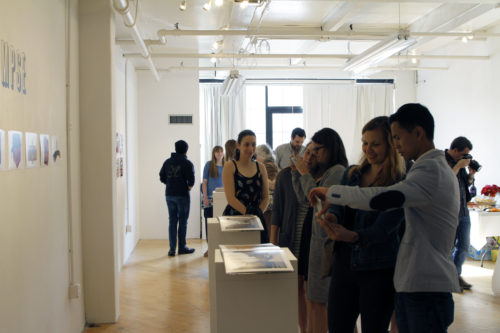
Getting a glimpse of Glimpse at hob’art gallery
A ROAD TO STEVENS
Thompson, O’Brien, and Manzione all come from Masters of Fine Arts backgrounds. Of course, their love of art goes much further back. “I was always making things that I could then think about: cups and food and rearranging things, taping things to string and hanging them in a weird way,” remembers Manzione. “And then seeing my mom or sisters look at it and have this reaction to these everyday objects that are now doing something else. I thought of it as kind of magical.”
In high school, he focused first on drawing, then ceramics, and was fortunate to be in one of the earlier schools to offer digital-imaging training. Manzione studied fine arts while attending New Jersey’s William Paterson University, and then completed a one-year post-baccalaureate program at the Maryland Institute College of Art. He pursued his graduate studies at Rutgers’ Mason Gross School of the Arts. “So, that was like, 9 straight years of art school,” Manzione says.
He went on to conduct workshops and lectures (“I always knew I wanted to teach,” he says), before landing adjunct professor positions at Philadelphia’s La Salle University and Rowan University in Glassboro. When Manzione noticed an opening at Stevens, he jumped at the opportunity. “I’m really happy to be here, this is a perfect fit for me,” he says. “The job description was describing me.”

Assistant professor Nicholas O’Brien gives students a hand…
APPLYING THEMSELVES
Stevens has become increasingly appealing to prospective art students as well — with a twist. “Students who are applying here now seem to want to focus on an art program but not be at an art school,” Manzione explains. “They maybe also want to do a marketing or computer science or engineering major. The mixing of them is really fascinating; you can come out of here with some really strong skills.” (Julia, for example, was a double major in Visual Arts & Technology and Literature, with a minor in Marketing.)
The application process includes a letter of recommendation and a portfolio of up to 15 pieces. As of last year, the program no longer requires submission of an SAT score. “We fought for that because, while parts of [the SAT process] are important, it’s not really what we’re looking for,” says Manzione.
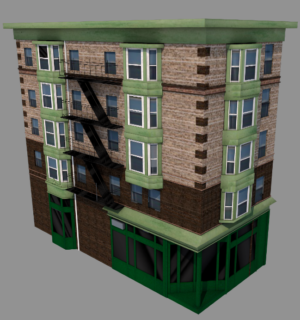
3D image of Elysian Cafe at 1001 Washington Street
Julia Guignard’s path to Stevens began in rural upstate New York. “My county has more cows than people,” she says. Her art efforts in high school included drawing, painting, photography, sculpture, printmaking, and collaging. “I did an entire series of bird sculptures that were made out of Architectural Digest magazines, those were fun,” Julia recalls.
She was also a top-ranked student-athlete, and was recruited to play tennis at Stevens. Julia competed on the varsity team all four years.
Between her intense studies and sports, Julia acquired real-world experience. She interned at the HobokenGirl blog (among her tasks: photographing every storefront on every avenue), and has been a visual display intern (helping set up and photograph window displays) for Anthropologie on 5th Avenue in Manhattan. Photography and digital design may figure into her post-graduation work plans. “In the long run, I’ll be looking more into augmented reality, expanding on what I’ve just started with the Glimpse project,” Julia says.
VA&T’s FUTURE
Meanwhile, the Visual Arts & Technology Program continues to grow. Their studio is being completely renovated over the summer, and they hope to add facilities and equipment, such as creating a full woodshop. There will be 8 incoming freshman this year. Manzione states, “We’d like to get that to about 12, and eventually have a bigger program, where we’re taking in 20 to 25 students. And keep going.” The College of Arts and Letters also has a new dean, Dr. Kelland Thomas, who comes from a music background.
The increasing diversity of Stevens’ academic offerings, faculty, and student body makes it a more vibrant place than ever before, benefiting all involved. “I’ve collaborated with music techs, I’ve gotten advice from business students, and some of the engineers were telling me about programming for my app,” Julia explains. “That’s awesome to see.”
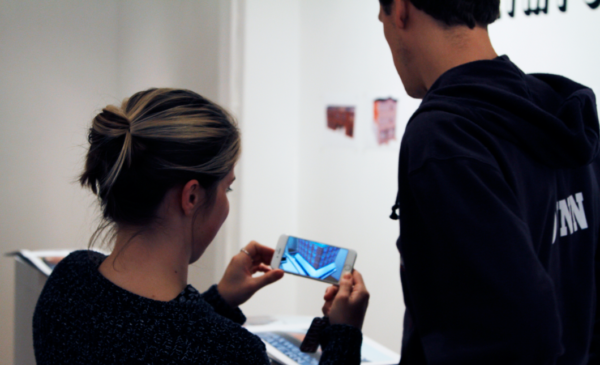

 Previous Article
Previous Article Next Article
Next Article FEATURED PROPERTY: 517 Hort Street, Westfield | 3BR/2BA Colonial | $549,000
FEATURED PROPERTY: 517 Hort Street, Westfield | 3BR/2BA Colonial | $549,000  FEATURED PROPERTY: 1125 Maxwell Lane #1207, Hoboken; 2BR/2BA Waterfront Rental — $5,300/mo
FEATURED PROPERTY: 1125 Maxwell Lane #1207, Hoboken; 2BR/2BA Waterfront Rental — $5,300/mo 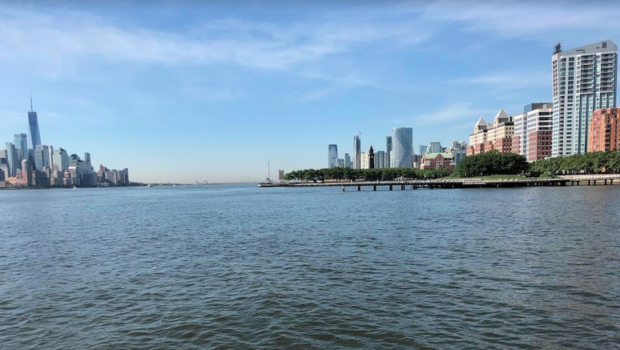 hOMES: Weekly Insight Into Hoboken & Jersey City Real Estate Trends | June 28, 2019
hOMES: Weekly Insight Into Hoboken & Jersey City Real Estate Trends | June 28, 2019  hOMES: Weekly Insight Into Hoboken & Jersey City Real Estate Trends | April 2, 2021
hOMES: Weekly Insight Into Hoboken & Jersey City Real Estate Trends | April 2, 2021  Hoboken Opens New Public Gym to Accommodate Explosive Demand for Recreation
Hoboken Opens New Public Gym to Accommodate Explosive Demand for Recreation  ST. PETER’S PREP BOYS LACROSSE CAMP — JULY 15-18 | REGISTER NOW!!!
ST. PETER’S PREP BOYS LACROSSE CAMP — JULY 15-18 | REGISTER NOW!!!  FEATURED PROPERTY: 311 Ridgewood Avenue, Glen Ridge | Gracious 6BR/3.5 BA | $1,150,000
FEATURED PROPERTY: 311 Ridgewood Avenue, Glen Ridge | Gracious 6BR/3.5 BA | $1,150,000  Hoboken Goes Global
Hoboken Goes Global